If you have an ugly, and probably noisy, air conditioning unit in your garden, yard or deck, there are many ways to cover or hide it. I’ve done some research and compiled 9 ‘actually different’ approaches you can pick and choose to stop your unit bugging you.
Although there are numerous variations – from the cheap to the very expensive – most fall within these categories:
- Timber/Artificial Screens
- Trellis/Lattice (With or Without Plants)
- Timber Cabinets
- Planting Around It (Hedges, Screening Plants or Garden Beds)
- Raised Garden Beds
- Soundproof/Acoustic Fences
- Solid Walls – Brick, Concrete Block or Rammed Earth
- Layers Of Solid Barriers With Plantings
- Water Features (To Reduce The Noise!)
Your best option depends on where your air conditioning unit is and how much time and money you want to contribute to ‘solving’ the problem.
I’ve got another post that looks at an example of how to “blend” an air conditioning unit into a space down the side of the house. It’s useful because it forces you to think beyond just the ‘solution’ to a problem.
Speaking of solutions, most sources I looked at showed essentially the same way to “hide an AC unit” 20 different times. I want to do a little better.
Although each of the categories I mentioned above does a similar thing – block something visually – I think they also add a little nuance and can fit into different situations in different ways.
Materials, combinations of materials and the layout of elements all contribute to not just hiding an air conditioning unit from site, but hopefully reduce their noise as well.
Before we explore the options, let’s have a quick look at one important thing you need to keep in mind.
What To Consider When Hiding Your Air Conditioning Unit In Your Yard
Given their specific spacing and air flow requirements, you need to think about the following:
- Does your air conditioning unit have spacing requirements to ensure safe operation?
- Are there airflow requirements for it to function efficiently?
- What kind of noise and heat does it create when in use?
- Are there any materials or such it says you shouldn’t place around it?
- How often/likely are you to require access to it (bearing in mind you should always leave some way to access it)?
- Finally, could you potentially void warranty if you don’t provide adequate (minimum recommended) space around it?
This last point is critical.
DO NOT build anything permanent, or even make access or repair work difficult, if the manufacturer could use it as an excuse to reject a warranty claim.
Although unlikely, for some other utility types, the owner or manufacturer could order/require you to remove or destroy the work you’ve done so they can access the point when they need to.
The last thing you want to do is reduce the units efficiency, or void any warranty through damaging the unit (yourself or the repairer). If you’re unsure, more space and airflow is probably better.
Add as much space as you think you can get away with.
Now let’s have a look at a few materials and building options you have for hiding or covering your air conditioning unit.
1. Hiding AC Units With Timber Or Artificial Screens
Straightforward and easy to build or install, screens can wrap around and/or above the unit, successfully hiding it from view.
There are many approaches you could take, starting with a folding screen placed in front of or around the unit.
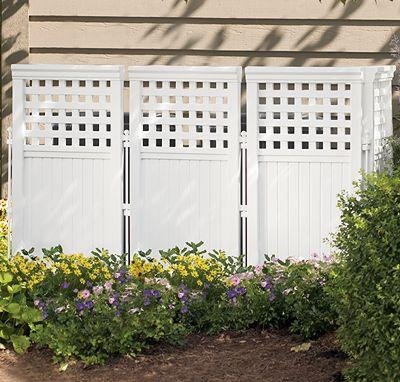
From walmart.com
You could go with something like a basic bamboo or woven screen if you wanted to wrap around the space as well.
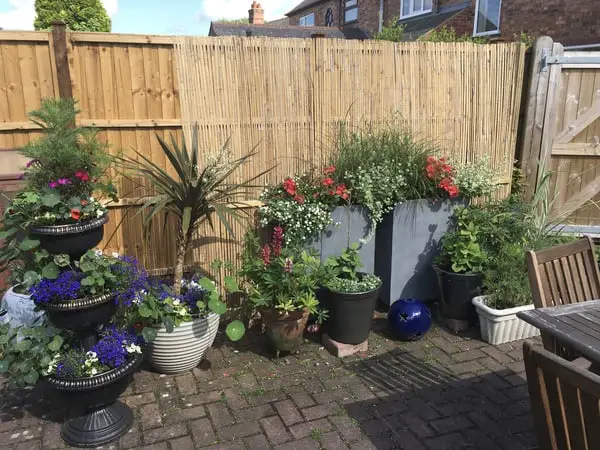
Image by J52 from gransnet.com
For something more permanent, a simple timber slat screen can sit around it. Ensure you leave enough airflow and space around any fan forced units so they continue to run efficiently.
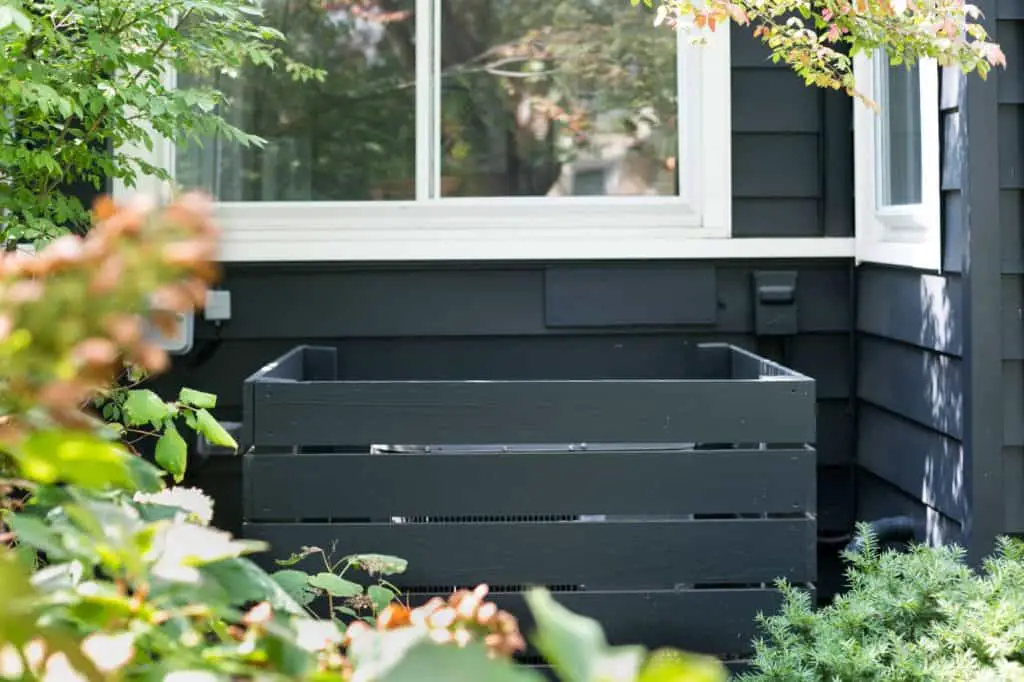
Or if you want to put in a little more effort, you could try something like the well known cover by house-pet.blogspot.com. A great ‘syncopated’ style where the gaps and timber slats are of unequal lengths, making it more visually engaging.

Image by house-pet.blogspot.com
2. Place Trellises/Lattice Screens Around Units – With Or Without Plants
Like the timber slat screen above, you can build something more permanent around the unit and pop some lattice in the frame. Then you can choose to leave it as a basic, well ventilated fence, or add some climbing plants to it to cover it a little more.
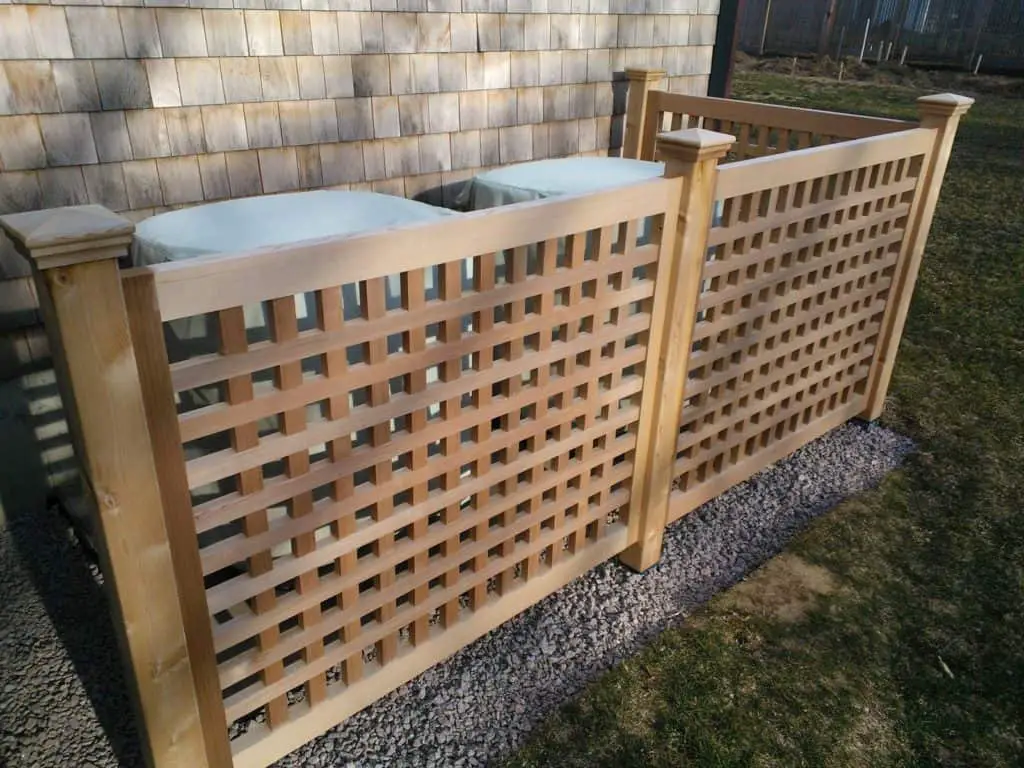
By custommade.com
A variation on this idea is to have a basic timber screen or lattice and hang small pot plants from it. These could climb up or flow down the frame, and allow you to mix and match multiple colours and shapes.
3. Covering Air Conditioning Units With Timber Cabinets
Another common strategy is to incorporate the cover for the unit into something larger, like a large set of cabinets.
One space can contain the unit – with suitable airflow and space – while the other can be a closet or shelves for storage.
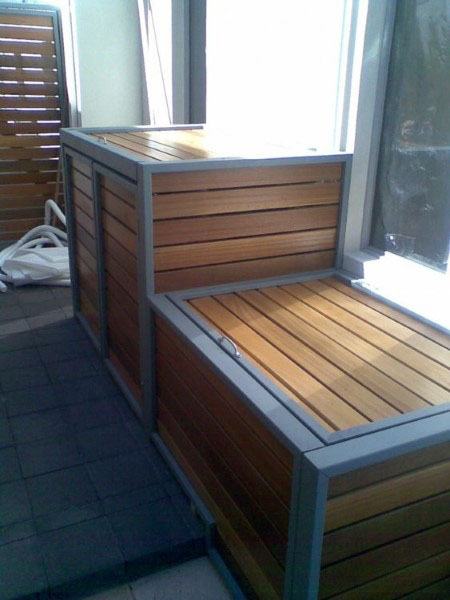
Image from nextluxury.com
Here is another slightly different example – where the owner opted for a table structure over the air conditioning unit.
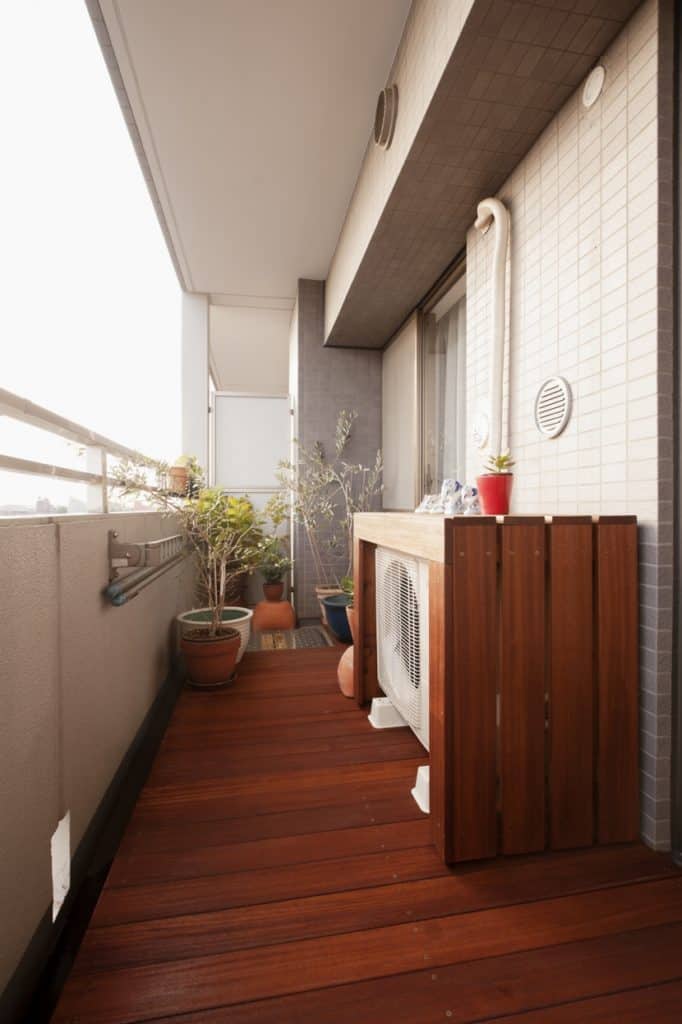
Image from suvaco.jp
4. Plant Around The AC Unit – Hedges, Screening Plants Or Garden Beds
Forgo frames altogether and opt to plant some hedges, screening plants or even layers of plants around the utility unit.
If you have enough space you could have lovely garden beds that don’t just hide the unit from view, but become attractive features of their own. The image below shows this approach done somewhat poorly. The unit is out of view, but the plants aren’t part of something grander.
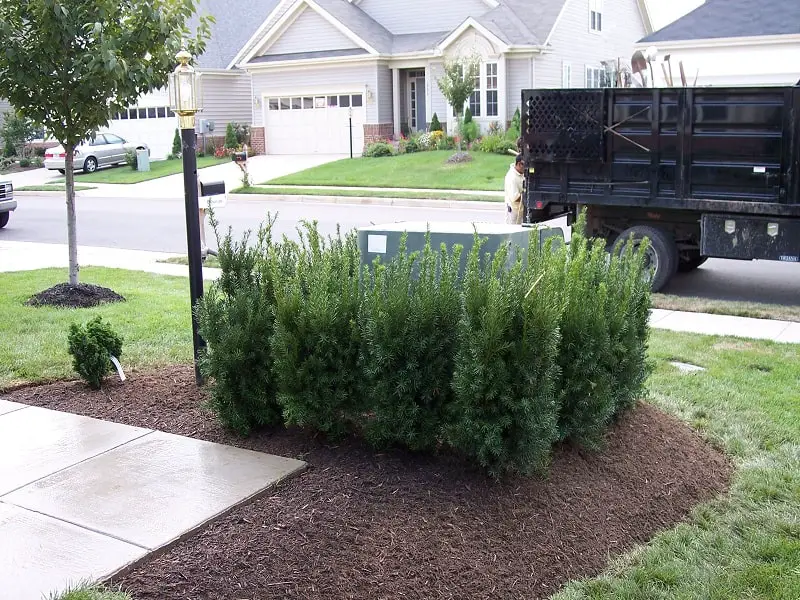
Image form qlnl.com
This image shows a much better approach, where the garden bed takes centre stage and it a thing unto itself – not just a cover.
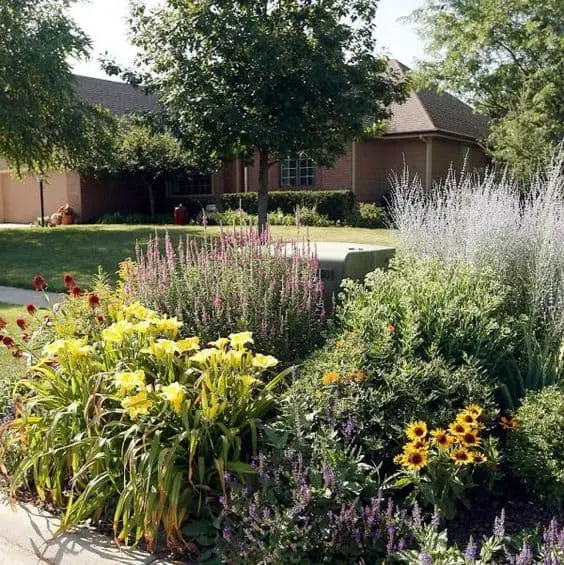
If you can’t plant directly into the ground, some pot plants may allow you to provide enough coverage to obscure it effectively. It may also prevent unwanted spreading of roots that could potentially cause damage, especially if the unit has elements underground.
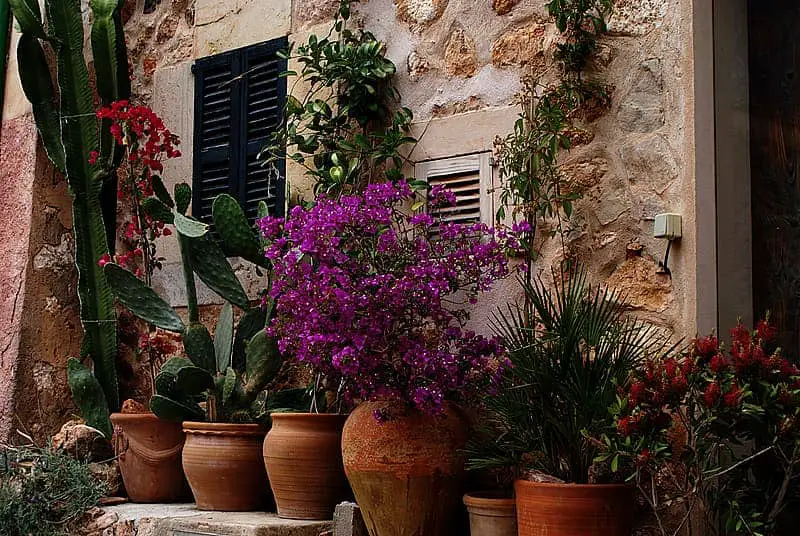
Image from pikrepo.com
Just be sure you prune and otherwise maintain your plants so they don’t block or interfere with the units operation. And provide enough space so you can maintain the unit and the plants.
5. Surround Your Aircon Unit With Raised Garden Beds
Depending on where you are in the world you could opt to build some raised garden beds around the aircon unit to grow produce in.
You could place some taller trellises at the back near the utility unit so your vegetables or herbs could grow up them, adding more coverage – and maybe taking advantage of cooling breezes.
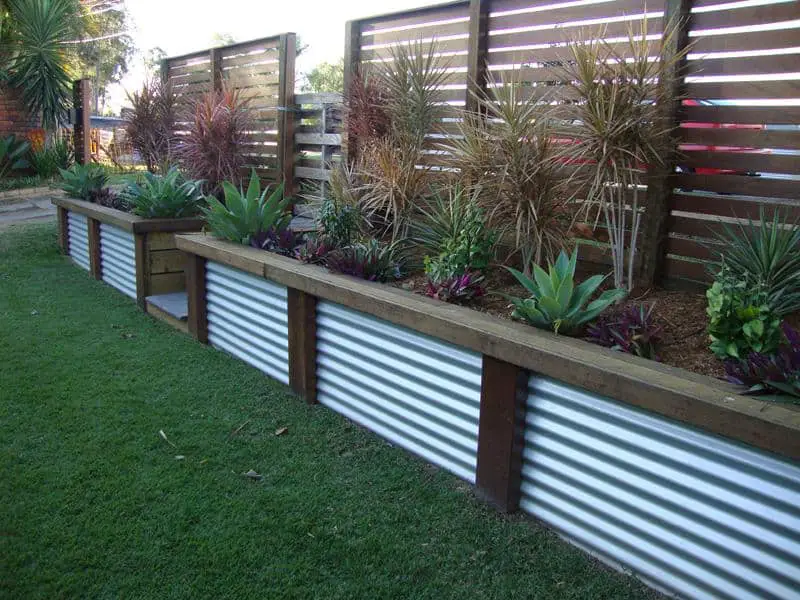
By Scenic Scapes Landscaping. Image from hipages.com.au
This approach would require more consideration as raised beds aren’t cheap to install properly. And you want to ensure any excess heat produced by the utility doesn’t damage your vegetables.

Image howtogardendesign.com
But, if it had enough sun and/or protection, you could turn that dead space into something far more useful. And maybe even take advantage of any warmth in the area during colder months.
6. Try Soundproof / Acoustic Fences To Dampen The AC Unit’s Noise
This is a less common option, but may be perfect for you if the unit can be noisy. Just like your screens above, you could install soundproof fences around the unit.
If you install them correctly (with no gaps beneath or between walls and uprights) they should block a large proportion of the noise the unit produces.
You will need to ensure suitable airflow, so keep the top open and have a reasonable gap between the unit and the fence. You also need to maintain access to the unit, so you could leave one side open and fill with grasses or small shrubs, or add a gate.

Image from florida-soundproofing.com
The image above is from a great selection of images by florida-soundproofing.com showing a soundproof wall being installed around an air conditioning unit.
What I also like is it shows how close the unit was to the entertaining area, making this particular material a perfect solution to reducing those noise levels.
7. Hide The Unit Behind Solid Walls – Brick, Concrete Block Or Even Rammed Earth
Following a similar layout to the acoustic fence above – the wall is offset, no roof, there is still access – you could opt to build a permanent wall around the unit.
Depending on your colour and material palette, you could use brick, concrete blocks (known as CMU’s) or even something unique like rammed earth.

Now this may seem a little overkill, but, as you’ll see in this post (also mentioned at the top), you can include this approach as part of a larger design.
And that design might allow you to look beyond a basic solution – to cover an aircon unit – and explore how to make the space somewhere you’d like to spend time.
If that is something you could do, it might be worth spending the money and using such heavy materials – because they are part of the framework of something bigger (but achieve another purpose – hiding the utility – at the same time).
8. Cover The Air Conditioning Unit By Layering Solid Barriers With Plantings
You don’t need to rely on just one of the options I outlined above. In fact, it may be better to pair a few together.
If sound is an issue, add a solid layer of some kind – even a basic timber fence – with some plantings around it. Don’t have any gaps (other than an access point in) and your solid wall with plants will do wonders in reducing noise.
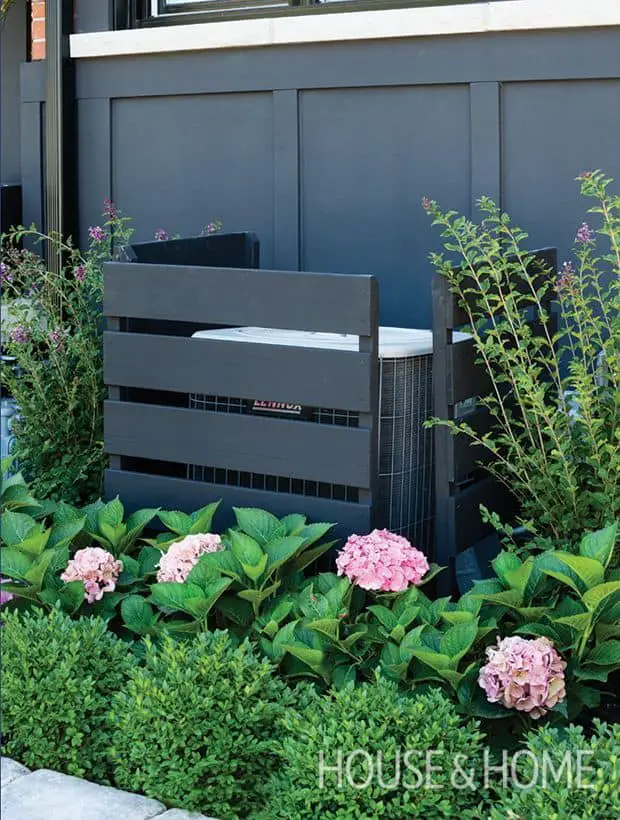
Image from houseandhome.com
Not only that, but you can extend the planting ‘look’ into other spaces, so they aren’t just a screen for something, but a garden bed in their own right.
9. Use A Water Feature To Mask The AC Unit’s Noise
Stealing from my blocking road noise guide, if noise is an issue, try to drown out some frequencies using a water feature.
Water bubbling and tinkling does a great job counteracting some of the mid to high frequencies air conditioning units can produce. If your unit sits near your entertaining space (or on your deck) the water feature can create a more pleasant atmosphere than the whining fan.
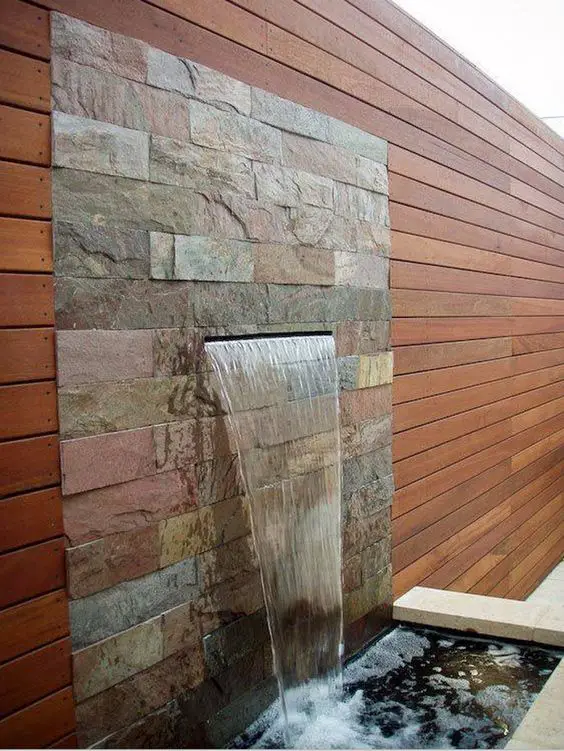
So you can see there are plenty of ways to hide, cover or minimise noise of a utility unit like an air conditioning unit.
But as I’ve intimated a few times, the key in successfully hiding something is to expand your solution beyond the immediate area. So when you look at the space as a whole, you’re hard pressed to see any utility exists there at all.
I hope you found this useful. Please post your thoughts, ideas and success stories below!

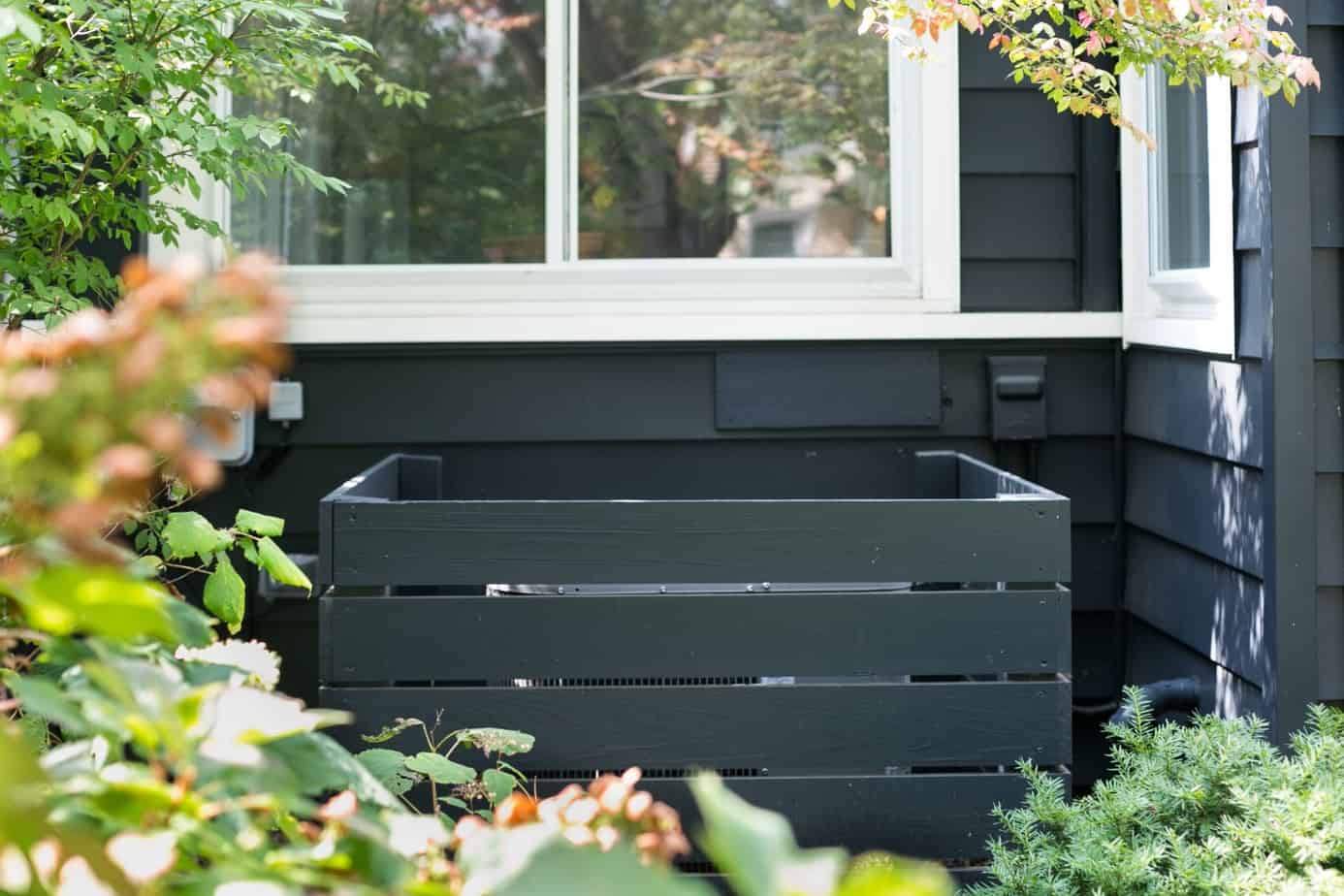
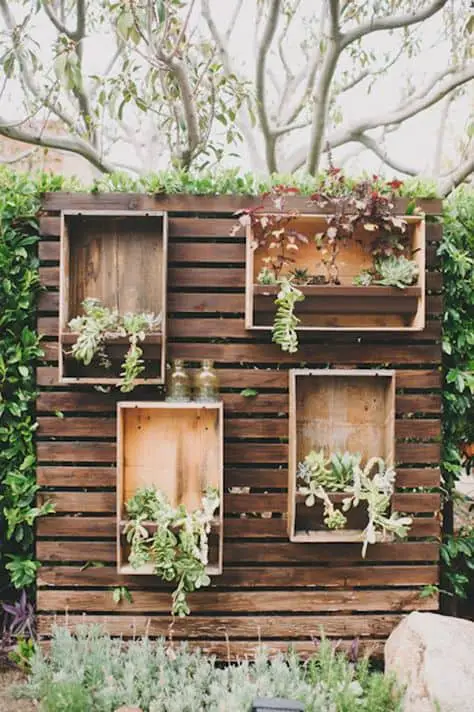
I was suggested this blog by my cousin. I am not sure whether this post is written by him as no one else know such detailed about my problem. You’re incredible! Thanks!